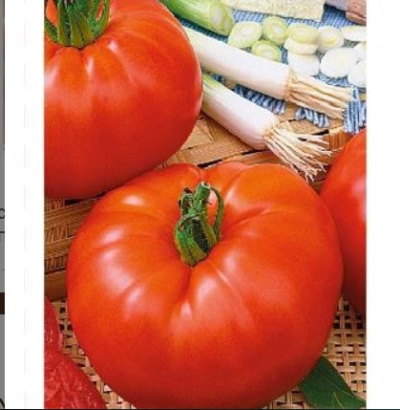
- Category: grade
- Growth type: determinant
- Appointment: fresh consumption, for pickling and preserving
- Ripening period: early
- Ripening time, days: 85-100
- Growing conditions: for open ground, for film greenhouses
- Bush size: undersized
- Bush height, cm: 80-90
- Leaves: strongly cut, resemble carrot tops
- Ripe fruit color: orange red
A low-growing and at the same time hardy tomato Carrot feels great both in greenhouses, under a film, and in open beds. This variety has a rather characteristic, recognizable appearance, and the fruits are tasty and aromatic. The culture was loved by gardeners primarily for its early maturity, unpretentiousness, as well as confident and stable yield, resistance to the main ailments of nightshades.
Description of the variety
The determinant, undersized variety differs in the height of the bushes no more than 80-90 cm.But with good care and abundant feeding, it is quite possible to increase this indicator by a few cm.The leaf blades of a tomato are strongly dissected, in appearance they are very similar to carrot leaves, due to which is what the variety was called Carrot. Each brush forms 6 to 7 ovaries of future tomatoes.
The main qualities of the fruit
Fully ripe tomatoes are poured orange-red, "carrot", but in shape they do not resemble a carrot, but, on the contrary, a flat circle. It is not smooth, but slightly ribbed. On the cut of the berry, chambers with seeds are visible. The weight of each tomato is small, ranging from 100 to 150 grams. The largest of them reach 220 BC.
Taste characteristics
The pulp of tomatoes Carrot juicy. The taste is sweet, recognizable tomato, with a slight sourness. This is a bright representative of the salad variety. In addition to being eaten fresh, it is suitable for salting and canning.
Ripening and fruiting
Carrot - from the early ripening group of tomatoes (from germination to the beginning of fruiting, it takes from 85 to 100 days). In July and August, you can harvest crops that are large and regular.
Yield
Up to 6-9 kg from one bush is harvested annually, so Carrot can be attributed to high-yielding varieties.
The timing of planting seedlings and planting in the ground
To fully enjoy early ripe tomatoes, sowing seedlings must be done on time - this is March-early April. A picking of tomato seedlings at the stage of the 1st leaf is mandatory. The timing of the transfer of seedlings to the ground should not be missed - this is early-mid-May or late May-early June. In general, experts recommend sowing seeds 50 days before planting in the ground at a permanent place.

Growing tomato seedlings is an extremely important process, because it largely depends on whether the gardener will be able to harvest at all. All aspects must be taken into account, from seedbed preparation to planting in the ground.
Landing scheme
It is recommended to plant small bushes according to the scheme 40 x 60 cm. This is the optimal planting of grown seedlings on the site.

Growing and care
The Carrot variety is cultivated by the usual seedling method, in principle the same as the bulk of other tomatoes. The main thing is to do everything on time, to follow all the rules for sowing, transferring seedlings.
If it is decided to use a heated greenhouse for growing tomatoes, then it is possible to sow tomatoes directly to the garden (April), and when using a film shelter, sowing is done in May (what date is decided on an individual basis, depending on the region and weather / temperature conditions).
The correct choice of a site for planting grown tomato seedlings of the Carrot variety is very important. Everything is important: illumination, temperature indicators and even those plants that grew earlier in this place. Any tomato will grow well and bear fruit in fertile soil, rich in organic matter. The preparation of the beds includes the introduction of appropriate dressings into the soil.
In the process of caring for "carrot" tomatoes throughout the growing season, traditional activities are carried out: watering, loosening the earth, timely fertilization and feeding. And also the culture needs moderate pinching.




A plant needs different micronutrients at each stage of growth. All fertilizers can be divided into two groups: mineral and organic. Folk remedies are often used: iodine, yeast, bird droppings, eggshells.
It is important to observe the rate and period of feeding. This also applies to folk remedies and organic fertilizers.
Disease and pest resistance
Diseases common among nightshades, such as fruit rot and late blight, rarely affect tomatoes of the Carrot variety. Gardeners value culture very much for this.


Growing regions
The Carrot variety is very common in Ukraine, Russia, Moldova. True, in other countries, unfortunately, it did not become so popular.

























































































